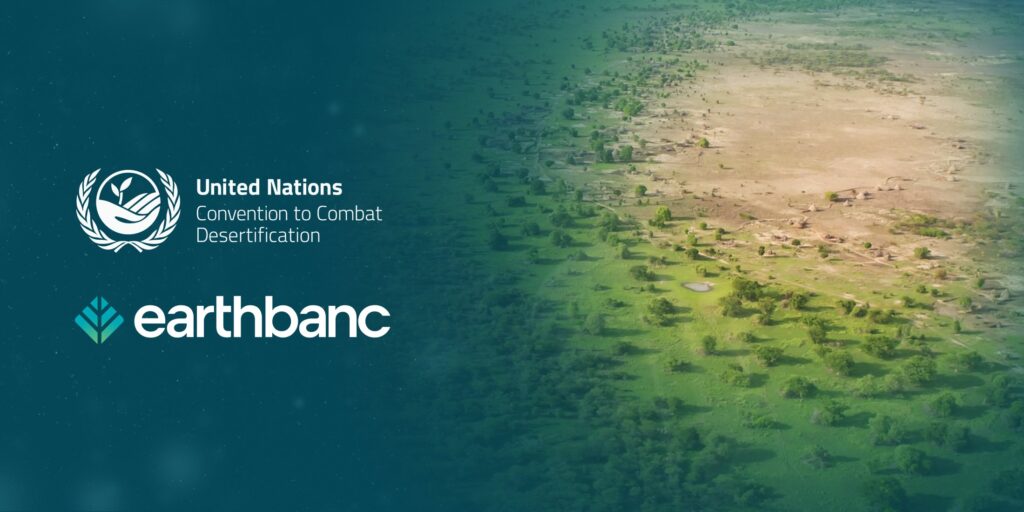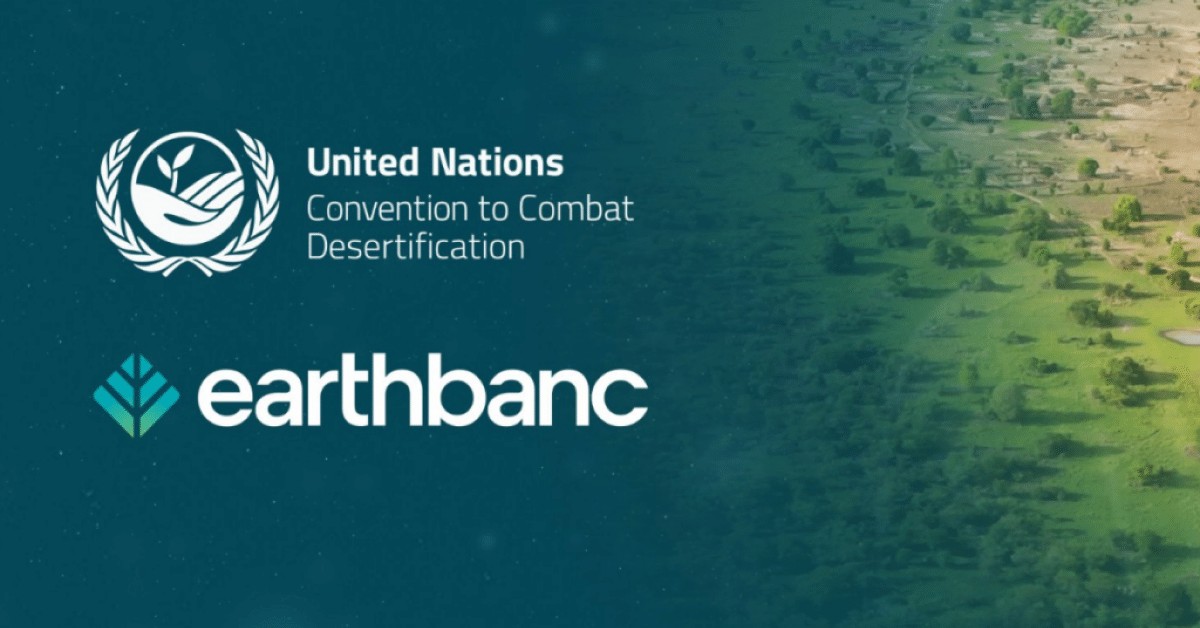
Earthbanc has signed a partnership with the United Nations Convention to Combat Desertification (UNCCD) to explore options for launching a global fintech and carbon credit platform that finances land restoration and carbon removal. It would enable investors to support projects that directly advance the goals of the UNCCD Land Degradation Neutrality (LDN) targets.
Today, 129 countries have expressed their willingness to set targets and achieve Land Degradation Neutrality (LDN). This means billions of hectares of land across the world will be restored to health and vast amounts of carbon, up to 2.9 billion tonnes annually according to the IPCC, will be sequestered into soils, trees and ecosystems.
Mr. Rishabh Khanna, Chief Impact Officer at Earthbanc and a steering committee member of the Initiative of Land, Lives and Peace (LLP), presented a new initiative launched together with the UNCCD at COP15 summit – the new digital Sustainable Land Bonds product, which offer a cost-effective method for financing sustainable landscape and ecosystem restoration outcomes by acting as a universal carbon removal pre-purchase instrument, whereby carbon buyers can secure their supply and discounted price at an earlier stage of development.
“Finance for land and ecosystem restoration makes up less than 1% of all climate finance due to a lack of universal capital market products for these activities, yet ecosystem restoration is one of the largest carbon removal opportunities”, according to the IPCC report issued in April, 2022.
The bottleneck has been monitoring, reporting and verification (MRV) of sustainable land management (SLM) – it has been labour intensive, sometimes inaccurate and uses fragmented measurement and accounting methodologies. The UNCCD Land Degradation Neutrality (LDN) biophysical indicators provide a global mechanism and protocol-level set of metrics for digital Sustainable Land Bonds that can be cost-effectively measured and monitored with new satellite and remote sensing methodologies that leverage machine learning.



